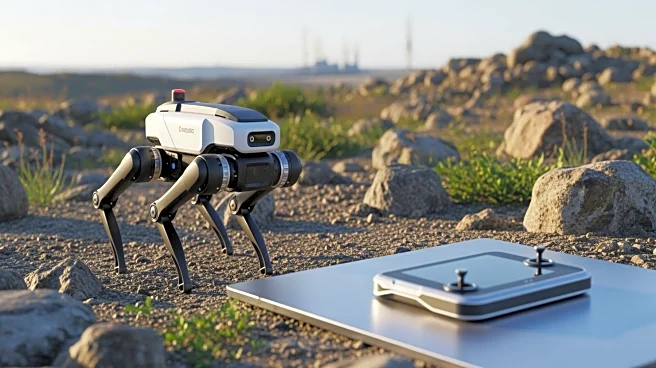What's Happening?
The mining industry is undergoing a significant digital transformation, with the smart mining and digital mining markets projected to reach USD 15.68 billion and USD 37.53 billion respectively by 2025,
and expected to grow to USD 29.4 billion and USD 62.28 billion by 2032. This growth is driven by the integration of connected sensors, data analytics, automation, cloud platforms, AI, and robotics across the mine lifecycle. The shift from pilot projects to scalable connected systems is being propelled by pressures on costs, safety targets, ESG reporting, and labor shortages. Mines are increasingly adopting technologies such as IoT sensor networks, predictive maintenance, AI-assisted decision systems, and autonomous operations to optimize processes and improve efficiency.
Why It's Important?
The digitalization of mining operations is crucial for enhancing operational efficiency, reducing costs, and improving safety standards. By integrating advanced technologies, mining companies can achieve real-time monitoring and optimization, leading to reduced downtime, energy savings, and safer working conditions. This transformation is also vital for meeting ESG reporting requirements and addressing labor shortages. As the demand for critical minerals grows, digital mining technologies will play a key role in ensuring sustainable and efficient extraction processes, supporting the global transition to renewable energy and low-carbon economies.
What's Next?
The next phase of digital mining will focus on full-site autonomy and the integration of AI and digital twins directly into emissions and resource management. Mines are expected to evolve into living networks that sense, predict, and adapt in real-time, with shared data models linking planning, plant, fleet, ESG, and finance. The challenge will be trusting data enough to act on it, as the industry moves away from multiple dashboards to unified operational systems.
Beyond the Headlines
The digital transformation in mining is not just about technology adoption but also about cultural and strategic integration. Companies that successfully embed digital strategies into their core operations will gain competitive advantages. The shift towards autonomous and connected sites will require changes in workforce skills and management practices, emphasizing the importance of change management and skills investment.











